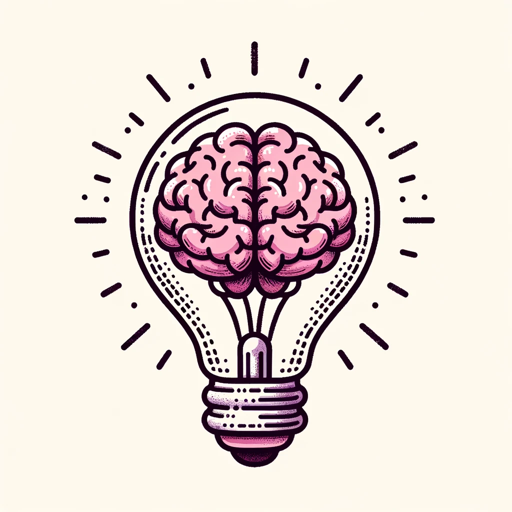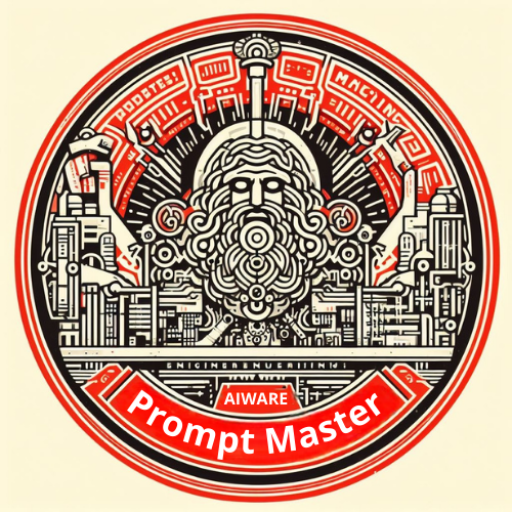Smart Prompts-AI-driven Smart Prompt queries
Optimize your queries with AI precision
Related Tools
Load More
Prompt Master
Crafts GPT-4 system message

Prompt Genius
Expert GPT-4 Prompt Engineer

Prompt Master
Improve basic prompts to be awesome Prompts

Prompt Master
GPT especializado en generar prompts creativos y efectivos.

Prompt Engineer Pro
Expert ChatGPT Prompt Engineer, collaborates to create optimal responses.

Prompt Engine
A specialized bot for crafting custom domain and template prompts.
20.0 / 5 (200 votes)
Introduction to Smart Prompts
Smart Prompts are highly optimized, strategically designed queries or instructions that maximize the effectiveness and precision of responses generated by AI models. Their primary function is to translate a user's open-ended or vague request into a focused, well-structured input that the AI can process effectively. By anticipating various factors—such as context, intent, and desired output—Smart Prompts streamline communication with AI systems, improving accuracy, reducing ambiguity, and enhancing user satisfaction. The purpose of Smart Prompts is to make AI interactions more intuitive and results-oriented, especially in environments where users may not have technical expertise in AI systems. For example, a user asking, 'What’s the weather like today?' can be refined to, 'Provide a detailed weather forecast for New York City on September 27, 2024, focusing on temperature, precipitation chances, and wind speed.' The latter prompt is more specific and ensures the AI delivers precise, actionable information. Smart Prompts help ensure that the AI interprets the user’s intent correctly, which is particularly useful in complex, multi-step tasks where clarity is critical.

Key Functions of Smart Prompts
Refining Ambiguous Queries
Example
A user might input, 'Tell me about renewable energy.' A Smart Prompt transforms this into, 'Provide a detailed overview of current renewable energy sources, focusing on solar, wind, and geothermal technologies. Include key challenges and advancements from 2020 onwards.'
Scenario
This is useful in educational or research settings where a broad query needs to be refined into something that offers depth, covering specific subtopics or timeframes.
Handling Multi-Step Instructions
Example
A query like 'Help me plan my vacation' can be optimized into a Smart Prompt: 'Help me plan a one-week vacation to Japan, including recommendations for flights, hotels, activities, and local food options. Provide cost estimates and timing for travel in November.'
Scenario
This function is ideal for personal assistants or travel planning apps, where multiple variables need to be considered and streamlined into a coherent response that covers all aspects of the task.
Generating Creative Outputs
Example
If a user asks, 'Write a short story,' a Smart Prompt could refine this to, 'Write a 1,000-word short story set in a futuristic city, where the main character is an AI robot learning about human emotions. Focus on themes of isolation and empathy.'
Scenario
This is particularly valuable in creative industries like writing or marketing, where prompts need to guide AI to produce detailed, imaginative, and contextually relevant content.
Target User Groups for Smart Prompts
Professionals and Businesses
Professionals who work in industries like law, finance, or healthcare benefit greatly from Smart Prompts. They often need precise, legally or technically accurate information, which requires well-structured prompts. For example, a financial analyst might need Smart Prompts to quickly generate reports based on specific financial data, such as 'Analyze quarterly revenue trends for the top three tech companies in Q2 2023 and compare to Q1 2022.'
Students and Researchers
Students and researchers in academia often face the challenge of framing their queries in a way that yields comprehensive and accurate results. For instance, a student working on a thesis could use Smart Prompts to generate relevant insights: 'Summarize recent research (from 2018 onward) on the effects of climate change on Arctic ecosystems, focusing on animal migration patterns.' This helps them obtain highly relevant and targeted information, which is critical in academic research.

Steps to Use Smart Prompts
1
Visit aichatonline.org for a free trial without login, no need for ChatGPT Plus.
2
Identify your specific use case, such as academic writing, coding assistance, or marketing content generation. This helps tailor the Smart Prompt effectively.
3
Craft a clear, concise query. Provide enough context for the prompt to work optimally, such as specifying tone, style, or format requirements.
4
Apply the Smart Prompt by using keywords and phrases relevant to your task, and check the response. Refine your input as needed for better accuracy.
5
Review and iterate the output. Test the results across different scenarios and adjust inputs for improved precision over time.
Try other advanced and practical GPTs
Smart GPT
Your AI-Powered Writing and Research Assistant

SMART Goals
AI-powered goal setting for success
Webinar Magic
AI-Powered Webinars for Everyone

SEO Magic
AI-powered SEO content creation

Plant Mom
AI-driven guidance for plant lovers.

Plant Doctor
AI-powered plant care assistant

Smart GPT
AI-powered assistance for your tasks.

Smart Art
AI-powered tool for creative visuals.

PC Build Buddy
AI-powered PC building made easy.

Moss
AI-Powered Solutions for Every Task

Author (Kids Book)
Create Magical Stories with AI

AIthor
AI-powered custom content creation

- Content Creation
- Data Analysis
- Market Research
- Code Debugging
- Writing Assistance
Q&A About Smart Prompts
What are Smart Prompts?
Smart Prompts are optimized queries designed to get highly relevant and tailored responses from AI systems like ChatGPT. They refine the input to improve accuracy, context, and usefulness of the output.
How can Smart Prompts improve productivity?
By using Smart Prompts, users can avoid vague or irrelevant answers, getting more precise, actionable information in less time. This is useful for writing, coding, brainstorming, and problem-solving.
Can Smart Prompts be customized for different industries?
Yes, Smart Prompts can be adapted for various industries like legal, academic, marketing, or technical fields. Users can incorporate industry-specific terminology or requirements into their queries.
Are there prerequisites for using Smart Prompts effectively?
A basic understanding of your task's context and goal is necessary. Additionally, providing clear instructions or examples will help the prompt return a more targeted result.
How does refining Smart Prompts enhance results?
By adjusting the level of detail or the type of request, you can progressively get more refined and accurate responses. It’s a dynamic process of interaction with the AI.